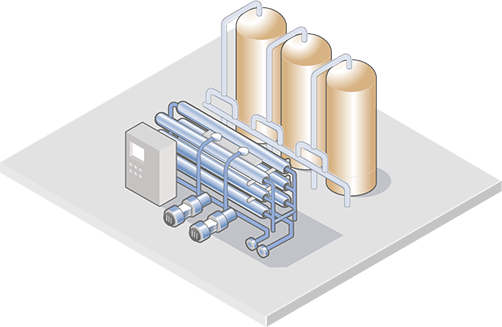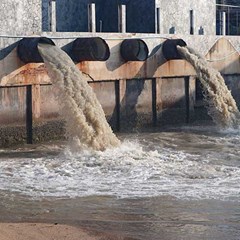Technologies and Developments in Hazardous Waste Water Therapy Technologies
The landscape of industrial wastewater treatment is undertaking a transformative change, driven by advancements that enhance both performance and sustainability. As regulative criteria progress, the integration of AI and maker discovering into wastewater management systems guarantees to streamline operations and make certain compliance.
Overview of Drainage Treatment Technologies
Wastewater therapy innovations incorporate a variety of techniques made to remove impurities from industrial effluents prior to their release into the atmosphere. These technologies are important for preserving eco-friendly balance and making certain conformity with ecological laws. The main classifications of wastewater therapy consist of physical, chemical, and organic techniques, each serving unique functions based on the nature of the pollutants present.

Biological therapy approaches utilize bacteria to break down natural matter, making them particularly reliable for organic-rich effluents. Methods like activated sludge and biofilm activators harness the all-natural deterioration abilities of germs, bring about considerable reductions in biochemical oxygen need (BODY)
Advanced Purification Strategies
Advanced filtering strategies stand for a crucial advancement in the realm of commercial wastewater treatment, boosting the effectiveness of contaminant elimination procedures. Industrial Waste Water Treatment. These techniques include a variety of technologies, consisting of microfiltration, ultrafiltration, nanofiltration, and turn around osmosis, which give consecutive obstacles for different particle sizes and chemical structures
Microfiltration and ultrafiltration utilize membrane layer systems to remove suspended solids, germs, and bigger organic particles, boosting the top quality of effluent prior to more treatment. Nanofiltration bridges the space in between ultrafiltration and reverse osmosis, efficiently eliminating divalent ions and natural compounds, hence reducing the tons on downstream processes.
Reverse osmosis provides the highest level of purification by permitting just water and small particles to go through its semi-permeable membranes, making it perfect for recovering high-grade water from industrial effluents. Current developments in membrane innovation, consisting of the advancement of even more sturdy and fouling-resistant products, have actually substantially boosted operational effectiveness and reduced expenses.
Including these advanced filtering methods not just enhances the general treatment procedure yet also contributes to sustainability efforts by allowing water reuse and resource recuperation in commercial setups. (Industrial Waste Water Treatment)
Biological Therapy Technologies

Moreover, the growth of engineered biological systems, such as membrane layer bioreactors (MBRs), integrates organic therapy with sophisticated membrane layer filtering. This combination permits higher effluent quality and lowered footprint, making it suitable for space-constrained industrial facilities. Technologies in genetically engineered microorganisms have likewise arised, boosting the biodegradation of specific pollutants, such as pharmaceuticals and heavy metals, that are traditionally challenging to eliminate.
In addition, the application of bioaugmentation methods, where helpful microbes are presented to enhance the existing organic therapy processes, has revealed promising lead to check my site improving treatment efficiency. These technologies collectively symbolize a pattern in the direction of more sustainable and efficient organic treatment techniques that can adapt to the advancing intricacies of industrial wastewater streams. As industries proceed to focus on environmental conformity, these biological innovations will certainly play a crucial duty in wastewater administration.

Source Recovery Techniques
In commercial settings, the assimilation of source recovery techniques has become progressively important for enhancing sustainability and minimizing waste. These approaches concentrate on removing important products and power from wastewater streams, consequently transforming possible toxins right into reusable resources.
One noticeable strategy is nutrient recovery, where nitrogen and phosphorus, typically present in excess in wastewater, are caught and converted right into fertilizers. This not just reduces environmental effects yet likewise provides a circular economy solution for agricultural applications. Additionally, technologies such as anaerobic digestion enable for the conversion of organic waste right into biogas, a renewable resource resource that can offset fossil fuel usage in commercial operations.
In addition, advanced filtration and membrane layer technologies help with the recuperation of industrial by-products such as salts and steels. These recuperated products can be rehabilitated into manufacturing procedures, reducing the demand for virgin resources.
Future Patterns in Waste Water Monitoring
As industries progressively focus on sustainability, the future of wastewater management is set to go through significant changes. Technical improvements, such as expert system and maker discovering, will certainly make it possible for more efficient monitoring and monitoring of wastewater systems. These modern technologies can predict maintenance needs, maximize therapy processes, and improve decision-making, ultimately lowering functional expenses and ecological impact.
Moreover, the assimilation of circular economic situation concepts will certainly play an important duty in wastewater monitoring. Industries are anticipated to move towards systems that not just deal with wastewater however additionally recover valuable resources, such as nutrients, water, and energy. This transition will lessen waste and promote the reuse of materials, aligning with international sustainability goals.
Arising treatment techniques, such as membrane layer bioreactors and advanced oxidation procedures, will certainly even more improve the effectiveness of wastewater therapy, enabling for better effluents appropriate for reuse. Furthermore, regulatory frameworks are most likely to develop, highlighting stricter standards for wastewater discharge and motivating markets to embrace this ingenious therapy options.
Verdict
In verdict, the advancement of commercial wastewater therapy innovations shows a substantial change in the direction of enhanced performance and sustainability (Industrial Waste Water Treatment). Developments in advanced filtering strategies, organic treatments, and source recovery approaches highlight the sector's commitment to environmental stewardship.
The landscape of commercial wastewater therapy is going through a transformative change, driven by innovations that improve both efficiency and sustainability.Wastewater treatment innovations encompass an array of methods made to get rid of impurities from industrial effluents prior to their release right into the environment.Utilizing the power of biological over at this website procedures has led to considerable technologies in the therapy of industrial wastewater.In addition, the application of bioaugmentation techniques, where valuable microorganisms are introduced to improve the existing biological therapy processes, has actually shown promising outcomes in improving therapy efficiency. These technologies jointly symbolize a fad towards even more lasting and effective biological treatment methods that can adjust to the progressing intricacies of industrial wastewater streams.